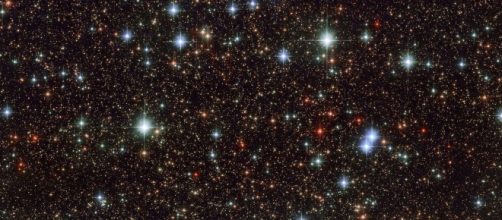Hubble Space Telescope took a picture of one of the largest stars ever found. The huge star is located in the Milky Way at approximately 15,000 light years away from the earth in the Westerlund 1 star cluster. This is one of the largest stars that astronomers have found to date. The star is a red supergigant. For the size of this star, astromers often classify them as hypergiants. It´s believed that if placed in the solar system, it would cover the extention from the center of the sun to a little over the orbit of jupiter.
Westerlun 1 star cluster
This is a compact and very massive star cluster in the Milky Way. It was discovered in 1961 and it´s believed that this star cluster will evolve into a globular cluster. This cluster contains many giant and hypergant stars, such as yellow supergigants and red hypergigants, including Westerlund 1-26. It also contains a slow-rotating pulsar known as CXO J164710.2-455216. This cluster is thought to have been formed during a single burst of star formation, suggesting that all its constituent stars have the same age and composition.
Westerlund 1-26 hypergigant star (Wd 1-26)
This is a hypergigant super star cluster located in the periphery of the Westerlund 1 star cluster in the direction os the southern constellation Ara.
It occupies the fourth place, at 1,500 solar masses in the number of big stars discovered. It possesses a size of about 1,530 solar radii, a luminosity of 380,000 times that of the sun and a temperature of 3,600 K. Situated at 11,500 light years from earth, it not easily seen due to interstellar dust. It´s believed that this star will evolve into a Wolf- Rayet star.
Age of Westerlund 1
The age of this star cluster is estimated to be approximately 4 million years old. Stellar evolution models indicate that 50-150 supernovae events would have already occurred in Wd1, with one supernova event every 10,000 years in the last million years. Besides being home to some of the most massive stars, Wd-1 is useful in astronomy for the close proximity, allowing astronomers to study its stars and get a deeper understanding about what occurs in the location of extragalactic star clusters.

